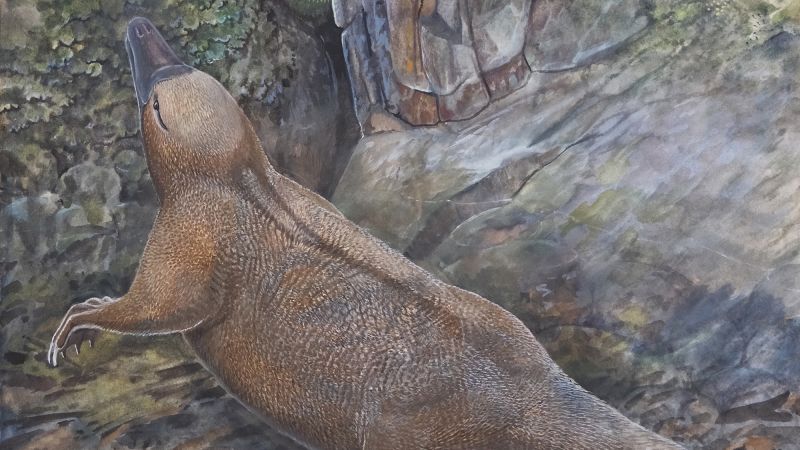The recent discovery pertaining to two of the world’s most extraordinary creatures has unearthed valuable insights into their evolutionary history. Researchers have identified a solitary fossil that serves as an emblematic representation of an ancestor long extinct, prompting a reevaluation of the evolutionary narrative of some of Earth’s most primitive mammals. This new research paves the way for a deeper understanding of the evolution of the platypus and the echidna—two animals that showcase unique reproductive traits as the only mammals known to lay eggs.
The platypus and echidna, both indigenous to the regions of Australia and New Guinea, are categorized as monotremes. They possess extraordinary characteristics, setting them apart from other mammals: they lay eggs instead of giving birth to live young. The aquatic platypus, for instance, showcases a distinctive bill akin to that of a duck, webbed feet, and a robust tail reminiscent of a beaver. In contrast, the terrestrial echidna, often referred to as the spiny anteater, is equipped with sharp quills and hind feet oriented backward, allowing it to navigate the earth more adeptly as it digs burrows. Notably, both species lack teeth and secrete milk through their skin for their offspring, colloquially known as puggles.
Dr. Guillermo W. Rougier, a professor specializing in anatomical sciences and neurobiology at the University of Louisville in Kentucky, remarked on the peculiarities inherent in these animals, asserting that they epitomize a foundational group among mammals. He elaborates that the mammals from the dinosaur era likely shared more biological traits with monotremes than with contemporary mammals such as horses or dogs, rendering monotremes essential in comprehending mammalian history.
A pivotal study recently published in the Proceedings of the National Academy of Sciences unveils deeper insights into this evolution, led by Suzanne Hand, a renowned paleontologist at the University of New South Wales. The research meticulously examines the internal structure of the fossilized remains of Kryoryctes cadburyi, an ancient monotreme ancestor who thrived more than 100 million years ago. The fossil, a humerus discovered in 1993 at Dinosaur Cove in Australia, initially appeared more akin to the bones of a terrestrial echidna than a water-dwelling platypus. However, advanced imaging techniques revealed unexpected revelations about its anatomical structure.
The results indicated that the fossil bore internal characteristics similar to those of the platypus, including a thicker bone wall and a diminished central cavity, traits conducive for life in water by reducing buoyancy. This contrasts with the echidna, which possesses lighter, thinner bones suitable for its terrestrial lifestyle. These findings bolster a popular theory—albeit still unverified—that Kryoryctes served as a common ancestor for both the platypus and echidna, suggesting that it may have inhabited aquatic environments during the age of dinosaurs.
According to Hand, this study underscores that the amphibious adaptations observed in the modern platypus can be traced back to at least 100 million years ago, while land-based echidnas reverted to terrestrial living much later. Notably, while numerous examples exist of species transitioning from land to water—like whales diverging from land mammals—there are few instances of reverse evolution as seen in echidnas. Transitioning back to a land-dwelling existence necessitates extensive modifications in the musculoskeletal system, which includes alterations to limb positioning and reductions in bone density.
Interestingly, the echidna’s unusual backward-facing feet might be a vestige inherited from swimming ancestors that utilized their hind limbs for navigating through water. Dr. Rougier remarked on the study’s implications, asserting that they convincingly demonstrate early adaptations for a semi-aquatic lifestyle among these species. He emphasized the significance of their primitive evolution to better comprehend mammalian ancestry, including that of humans.
Rougier illuminatingly noted that monotremes serve as living remnants from a distant past, highlighting that the last common ancestor shared between humans and the platypus dates back approximately 180 million years. He concluded that studying monotremes is vital to predicting the biological characteristics of this ancient ancestor.
Overall, the narrative surrounding monotremes, specifically the unique evolutionary paths of the platypus and echidna, enriches our understanding of mammalian history and evolution, transcending contemporary biology.



